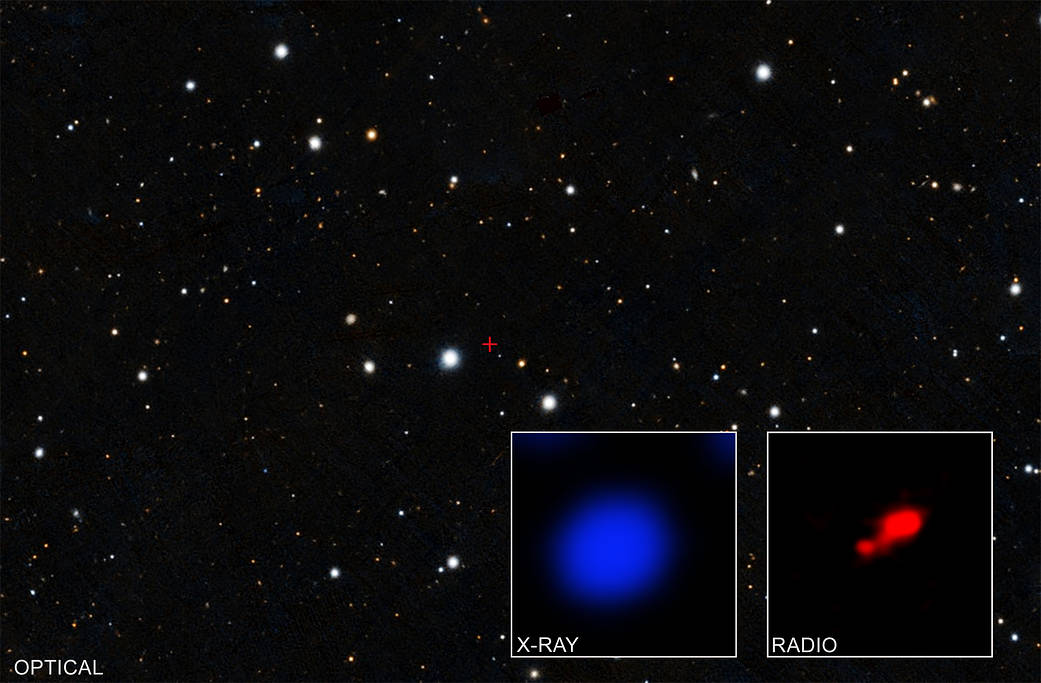Data from NASA’s Chandra X-ray Observatory have revealed what may be the most distant shrouded black hole, as reported in our press release. Found at a time only about 850 million years after the Big Bang, this black hole could help astronomers better understand an important epoch in the history of the Universe.
The large image shown here is from the optical Pan-STARRS survey. The image on the left contains X-rays detected with Chandra from a small, central region (marked with a red cross) of the optical field. In the middle is the quasar PSO167-13, which was first discovered with Pan-STARRS. Optical observations from these and other surveys have resulted in the detection of about 200 quasars that, like PSO167-13, were already shining brightly when the universe was less than a billion years old, or about 7 percent of its present age. On the right, the image shows the same field of view as seen by the Atacama Large Millimeter Array (ALMA) of radio dishes in Chile. The bright source is the quasar and a faint, nearby companion galaxy is seen to the lower left.
Many black holes, especially in the early Universe, are expected to be veiled by thick clouds of gas and dust. These are known as “obscured” black holes. This cocoon of material makes it more difficult to find and identify these black holes because it blocks much of the light that is emitted from the region around the black hole.
Astronomers think that most of the early growth of black holes occurs while the black hole and disk are strongly obscured. The cocoon of material feeds into the disk, and as the black hole grows, the gas in the cloud is depleted until the black hole and its bright disk are uncovered.
Optical light surveys are generally only considered effective at finding unobscured black holes, because the radiation they detect is suppressed by even thin clouds of surrounding gas and dust. Therefore, researchers expected that PSO167-13 would be unobscured.
However, Chandra’s unique ability to accurately record X-rays and their positions showed the PSO167-13 was different. After 16 hours of observation only three X-ray photons were detected from PSO167-13, all with relatively high energies. Low energy X-rays are more readily absorbed than higher energy ones, so the likely explanation for the Chandra observation is that the quasar is highly obscured by gas, allowing only high energy X-rays to be detected.
If confirmed, PSO167-13 beats the previous record-holder for an obscured quasar by approximately half a billion years.
A paper describing these results led by Fabio Vito of of Pontificia Universidad Católica de Chile was published in Astronomy and Astrophysics on August 8th and is available online. NASA’s Marshall Space Flight Center manages the Chandra program. The Smithsonian Astrophysical Observatory’s Chandra X-ray Center controls science and flight operations from Cambridge, Mass.
Credit: X-ray: NASA/CXO/Pontificia Universidad Catolica de Chile/F. Vito; Radio: ALMA (ESO/NAOJ/NRAO); optical: Pan-STARRS
Read more from NASA’s Chandra X-ray Observatory.
For more Chandra images, multimedia and related materials, visit:



























